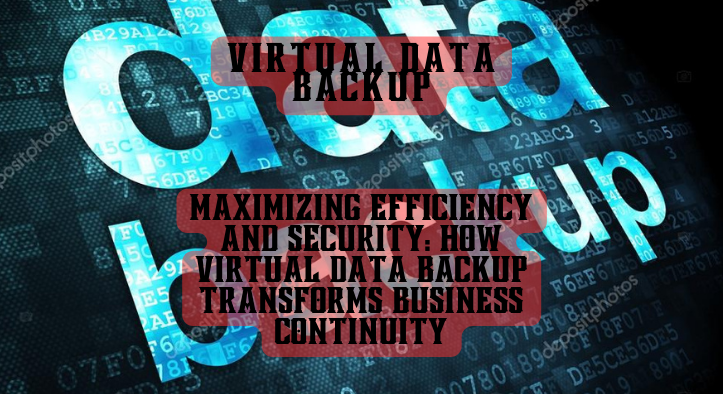Maximizing Efficiency and Security: How Virtual Data Backup Transforms Business Continuity

Maximizing Efficiency and Security: How Virtual Data Backup Transforms Business Continuity
Business continuity is essential for any organization. It ensures that operations continue to run smoothly and that data is secure and accessible. However, traditional data backup methods can be inefficient and insecure. Virtual data backup is a modern solution that can help organizations maximize efficiency and security while ensuring business continuity.
What is Virtual Data Backup?
Virtual data backup is a cloud-based data storage solution that allows organizations to store and access their data remotely. It is a secure and cost-effective way to ensure business continuity. Virtual data backup eliminates the need for physical storage devices, such as hard drives and tapes, which can be costly and unreliable.
Benefits of Virtual Data Backup
Virtual data backup offers a number of benefits for organizations looking to maximize efficiency and security while ensuring business continuity.
1. Increased Efficiency
Virtual data backup eliminates the need for physical storage devices, which can be time-consuming and costly to maintain. It also allows organizations to access their data from anywhere, at any time. This makes it easier for organizations to collaborate and share data, which can lead to increased efficiency.
2. Improved Security
Virtual data backup is more secure than traditional data backup methods. It uses encryption to protect data from unauthorized access and ensures that only authorized users can access the data. Additionally, virtual data backup is stored in the cloud, which means that it is not vulnerable to physical damage or theft.
3. Cost Savings
Virtual data backup is a cost-effective solution for organizations looking to maximize efficiency and security while ensuring business continuity. It eliminates the need for physical storage devices, which can be expensive to purchase and maintain. Additionally, virtual data backup is often offered as a subscription-based service, which can help organizations save money in the long run.
Case Study: How Virtual Data Backup Transformed a Small Business
One example of how virtual data backup can transform business continuity is the case of a small business in the United States. The business had been using traditional data backup methods, such as hard drives and tapes, but found them to be inefficient and insecure. After switching to virtual data backup, the business was able to increase efficiency, improve security, and save money.
The business was able to increase efficiency by being able to access their data from anywhere, at any time. This allowed them to collaborate and share data more easily, which led to increased productivity. Additionally, the business was able to improve security by using encryption to protect their data from unauthorized access. Finally, the business was able to save money by eliminating the need for physical storage devices and switching to a subscription-based service.
Conclusion
Virtual data backup is a modern solution that can help organizations maximize efficiency and security while ensuring business continuity. It eliminates the need for physical storage devices, which can be costly and unreliable. Additionally, it offers improved security and cost savings. The case study of the small business in the United States demonstrates how virtual data backup can transform business continuity.
In conclusion, virtual data backup is an effective solution for organizations looking to maximize efficiency and security while ensuring business continuity. It eliminates the need for physical storage devices, offers improved security, and provides cost savings. By switching to virtual data backup, organizations can ensure that their data is secure and accessible, while also maximizing efficiency and saving money.

